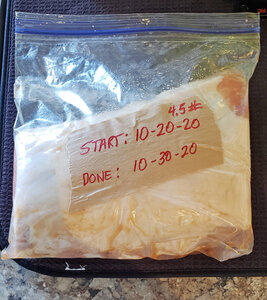Wrong... you need to calculate salt amount @ 25 to 30% loss... for example: if your tenderloin id 1 pound...
1 lb minus 30% = salt amount... that is how you get get to right saltiness property of finished product... your amount of wet brine doesnt affect saltiness... salt is distributed evenly regardless of brine amount... it is pure physic... time affects salt distribution... it's simple as that... hope it helps you get through....
I think you are speaking of a different recipe than the OP...







